Buildings and books
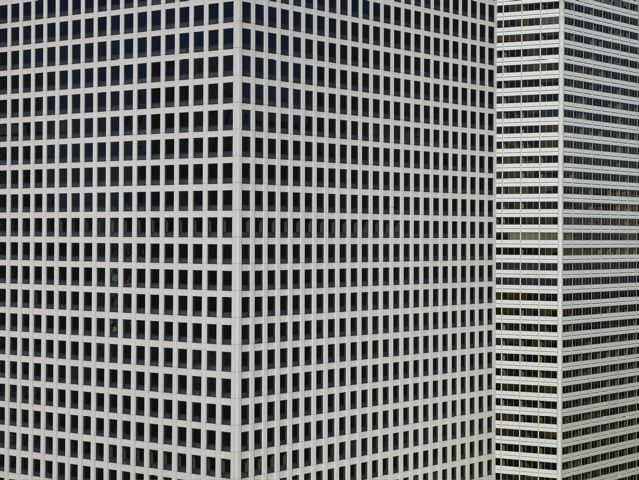 [Image: From The Transparent City by Michael Wolf; browse through the project on Wolf's website].
[Image: From The Transparent City by Michael Wolf; browse through the project on Wolf's website].I've got some essays coming out this year in books that might be of interest to BLDGBLOG readers; so while the blog has been a little slow over the past few months, I've been working like crazy on other projects.
In any case, one of those books has already been published, and the others will be available in the next few months.
The already published book is What is a City? Rethinking the Urban After Hurricane Katrina, edited by Rob Shields and Phil Steinberg.
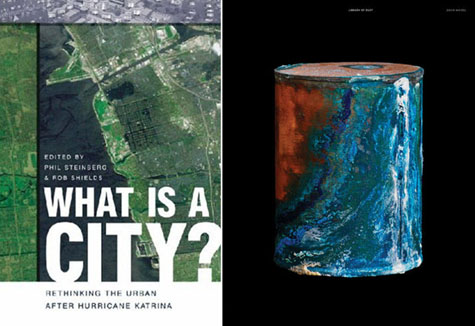 For that book, published by the University of Georgia Press, my wife and I co-wrote a chapter about New Orleans and urban flood control, citing John McPhee, China Miéville, the floating houses of Dura Vermeer, the "engineered deterrestrialization" of the lower Mississippi through the implantation of genetically modified artificial marshlands, and maybe a hundred other things, including a short history of the Army Corps of Engineers.
For that book, published by the University of Georgia Press, my wife and I co-wrote a chapter about New Orleans and urban flood control, citing John McPhee, China Miéville, the floating houses of Dura Vermeer, the "engineered deterrestrialization" of the lower Mississippi through the implantation of genetically modified artificial marshlands, and maybe a hundred other things, including a short history of the Army Corps of Engineers. It was an extremely fun chapter to write, and it appears alongside some great papers; those run the gamut from geography and public policy to community activism and philosophy – and it would look great in your own university library...
A book forthcoming this Fall, meanwhile, is Library of Dust by David Maisel.
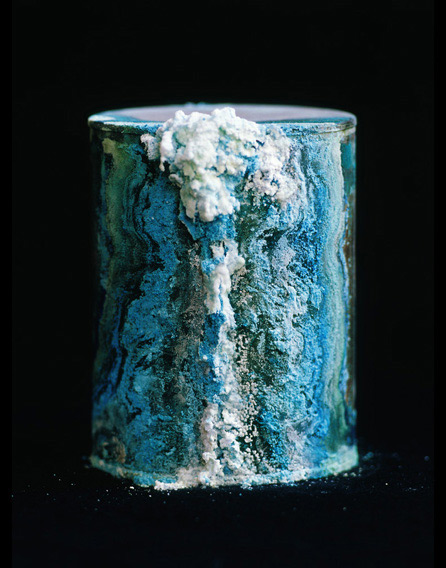 [Image: From Library of Dust by David Maisel; read about the project on Maisel's website].
[Image: From Library of Dust by David Maisel; read about the project on Maisel's website].If you haven't read the long interview I did with David a few years ago for Archinect, then I would urge you to check it out.
For that book, published by Chronicle, I used a few scenes from Haruki Murakami's novel Hard-Boiled Wonderland and the End of the World to discuss the universal presence of dust and what Walter Benjamin might call the auratic nature of historical artifacts (the essay does not use the word "auratic," you'll be happy to hear).
Maisel's book also has essays by Terry Toedtemeier, curator of photography for the Portland Art Museum, and Michael Roth. Maisel's own description of the work is fantastic:
- Library of Dust depicts individual copper canisters, each containing the cremated remains of patient from a state-run psychiatric hospital. The patients died at the hospital between 1883 (the year the facility opened, when it was called the Oregon State Insane Asylum) and the 1970s; their bodies have remained unclaimed by their families.
- On my first visit to the hospital, I am escorted to a dusty room in a decaying outbuilding, where simple pine shelves are lined three-deep with thousands of copper canisters. Prisoners from the local penitentiary are brought in to clean the adjacent hallway, crematorium, and autopsy room. A young male prisoner in a blue jumpsuit, with his feet planted firmly outside the doorway, leans his upper body into the room, scans the cremated remains, and whispers in a low tone, "The library of dust." The title of the project results from this encounter.
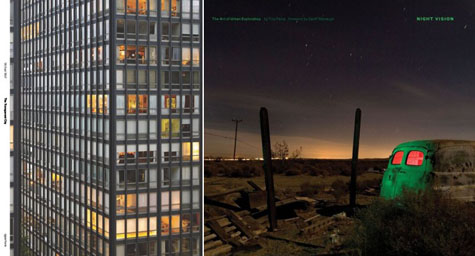 Coming out even sooner is Night Vision: The Art of Urban Exploration by Troy Paiva; that's also published by Chronicle. For that book I wrote an introduction, citing W.G. Sebald, the Romanticism of desert ruins, and the strange visual appeal of catastrophe.
Coming out even sooner is Night Vision: The Art of Urban Exploration by Troy Paiva; that's also published by Chronicle. For that book I wrote an introduction, citing W.G. Sebald, the Romanticism of desert ruins, and the strange visual appeal of catastrophe. Troy's Flickr page is a must-see as you wait for the book to be delivered; there's even a special set for Night Vision (and many others). Don't miss High Desert Nights.
Troy's first book was Lost America: The Abandoned Roadside West.
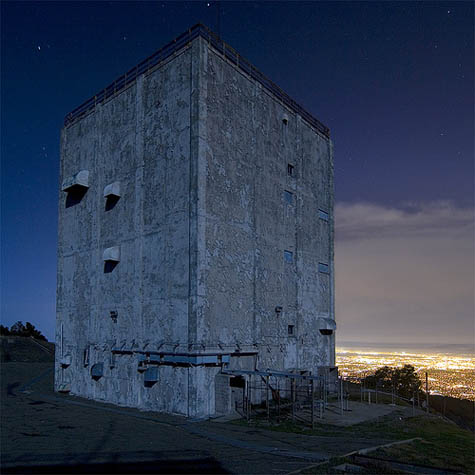
 [Images: The Cube and Lenticular by Troy Paiva, from his forthcoming book Night Vision].
[Images: The Cube and Lenticular by Troy Paiva, from his forthcoming book Night Vision].And, last but not least, there's The Transparent City by Michael Wolf, which also contains an essay by Natasha Egan.
Wolf is an amazing photographer; his Architecture of Density series is now legendary, and his many other projects are worth several hours – whole days – of your time. Glimpses of The Transparent City, shot entirely in Chicago, can be found on Wolf's website.
My essay in that book draws heavily on J.G. Ballard's novel High-Rise, exploring the psychology of large architectural structures. Harvard's Project on the City also makes a brief appearance. You can read an excerpt from it here.
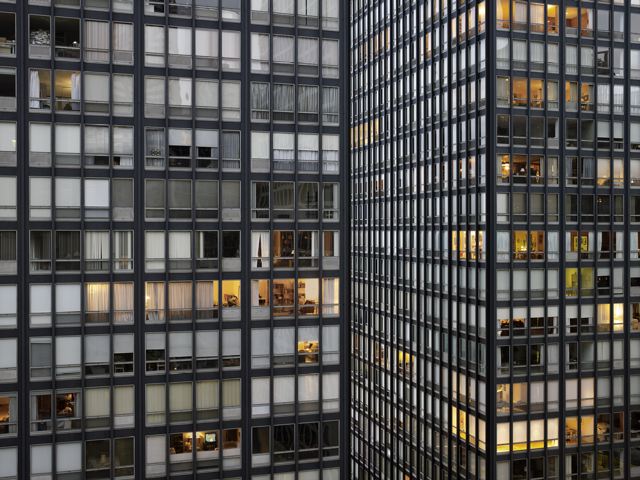 [Image: The Lake Shore Drive Apartments by Mies van der Rohe, photographed by Michael Wolf, from The Transparent City].
[Image: The Lake Shore Drive Apartments by Mies van der Rohe, photographed by Michael Wolf, from The Transparent City].So check those books out if you get the chance!
Amazon Links:
— What is a City? Rethinking the Urban After Hurricane Katrina edited by Rob Shields and Phil Steinberg
— Library of Dust by David Maisel
— Night Vision: The Art of Urban Exploration by Troy Paiva
— The Transparent City by Michael Wolf





Comments are moderated.
If it's not spam, it will appear here shortly!
For those of us who live overseas and have limited budgets, as well as even more limited access to English libraries, I would like to urge you to make your own contributions freely available online or as PDF downloads. I am, as you may guess, a proponent of CC.
While I'd love PDFs as well, often publishers retain non-competition rights over manuscripts once they are printed. So that could be at play. That said, if you change a couple words...
Post a Comment